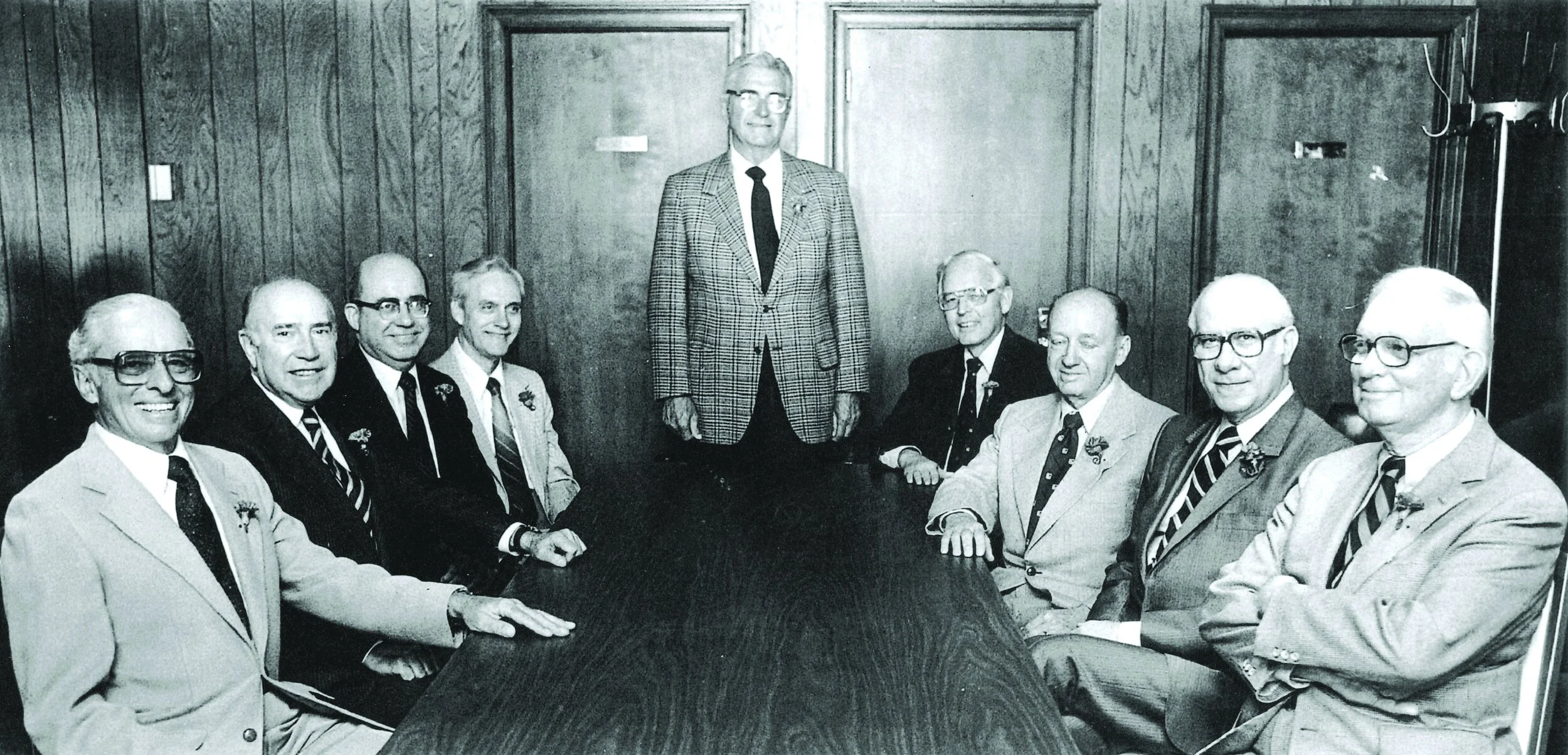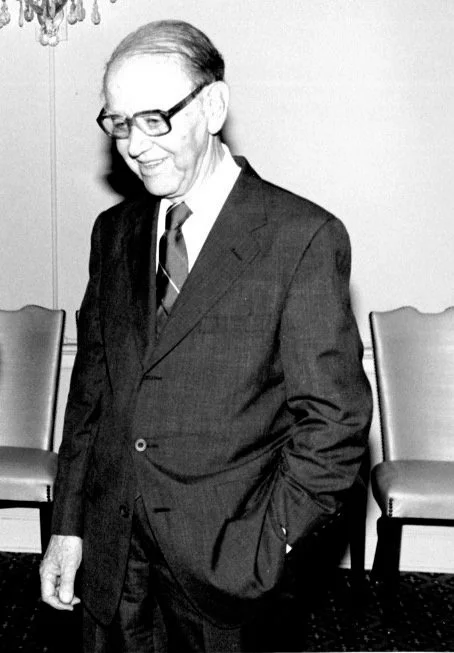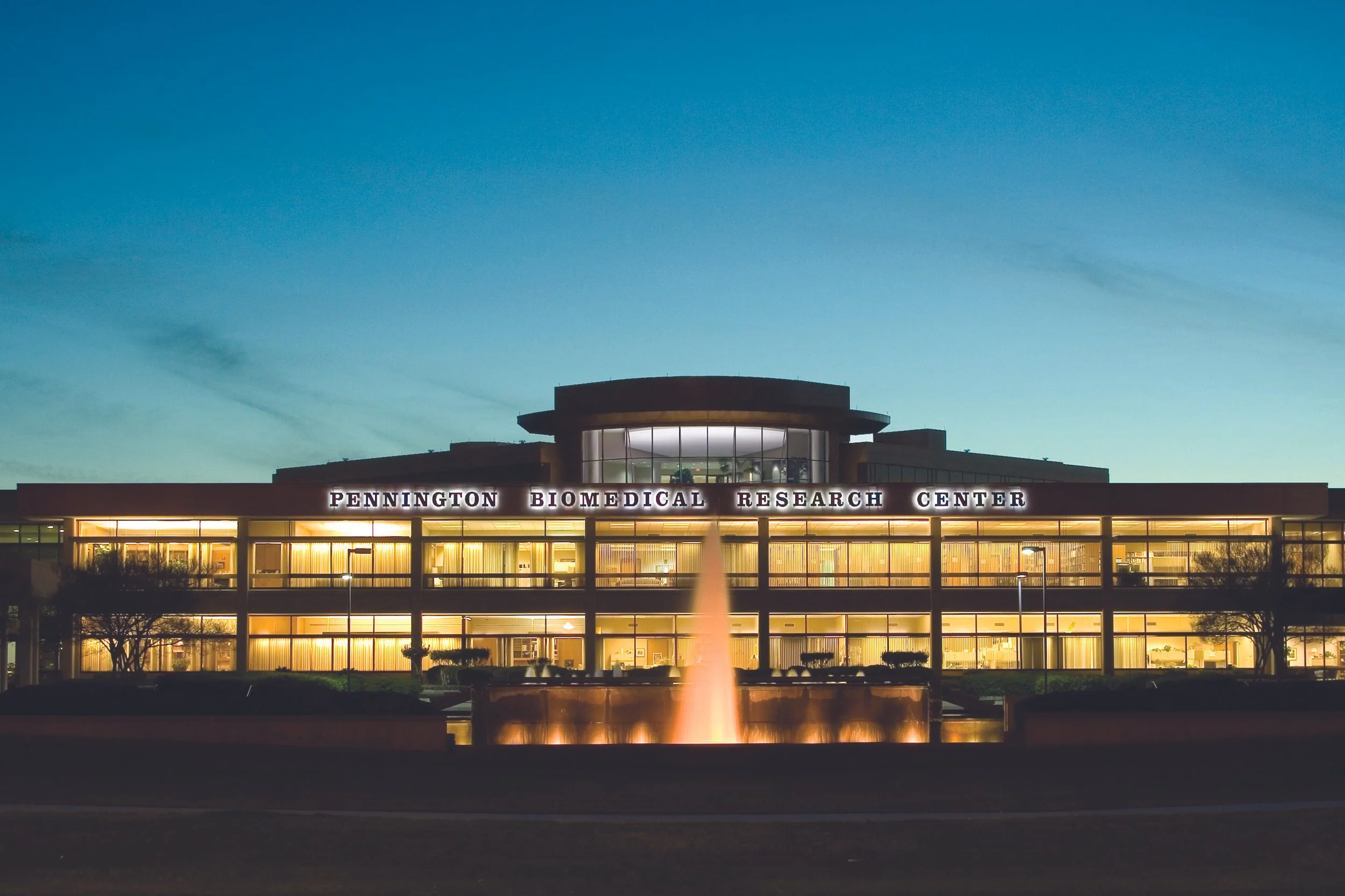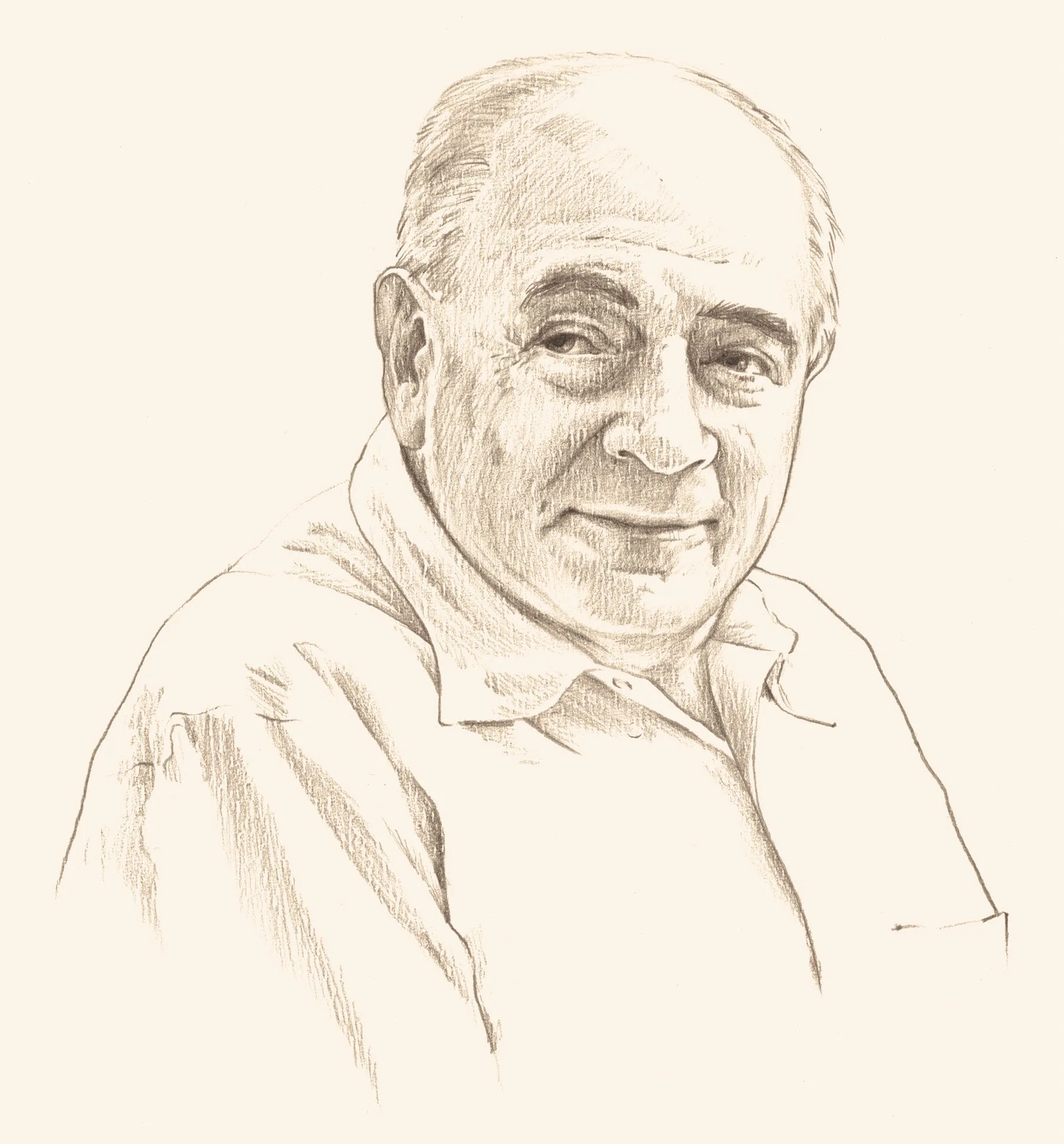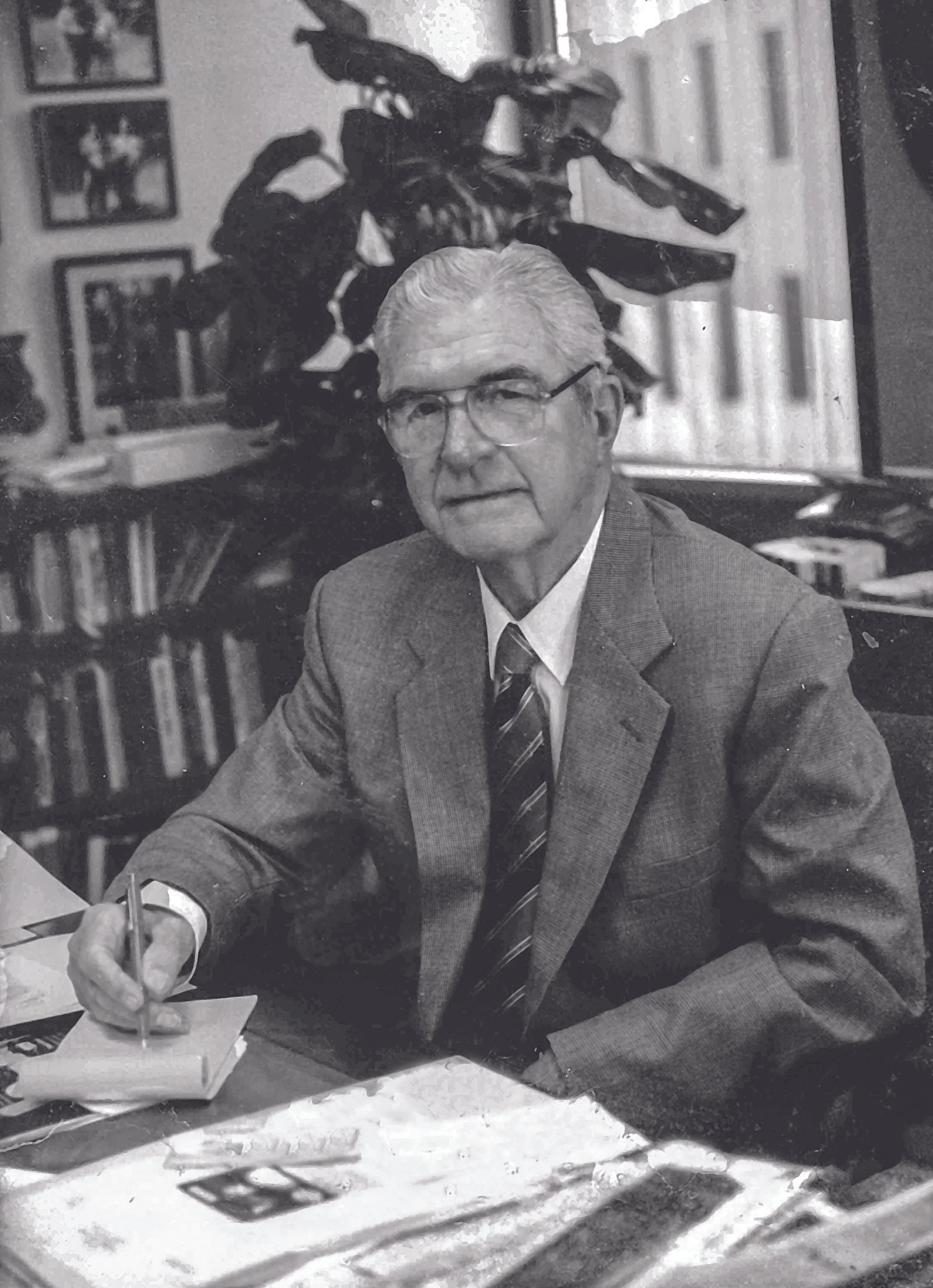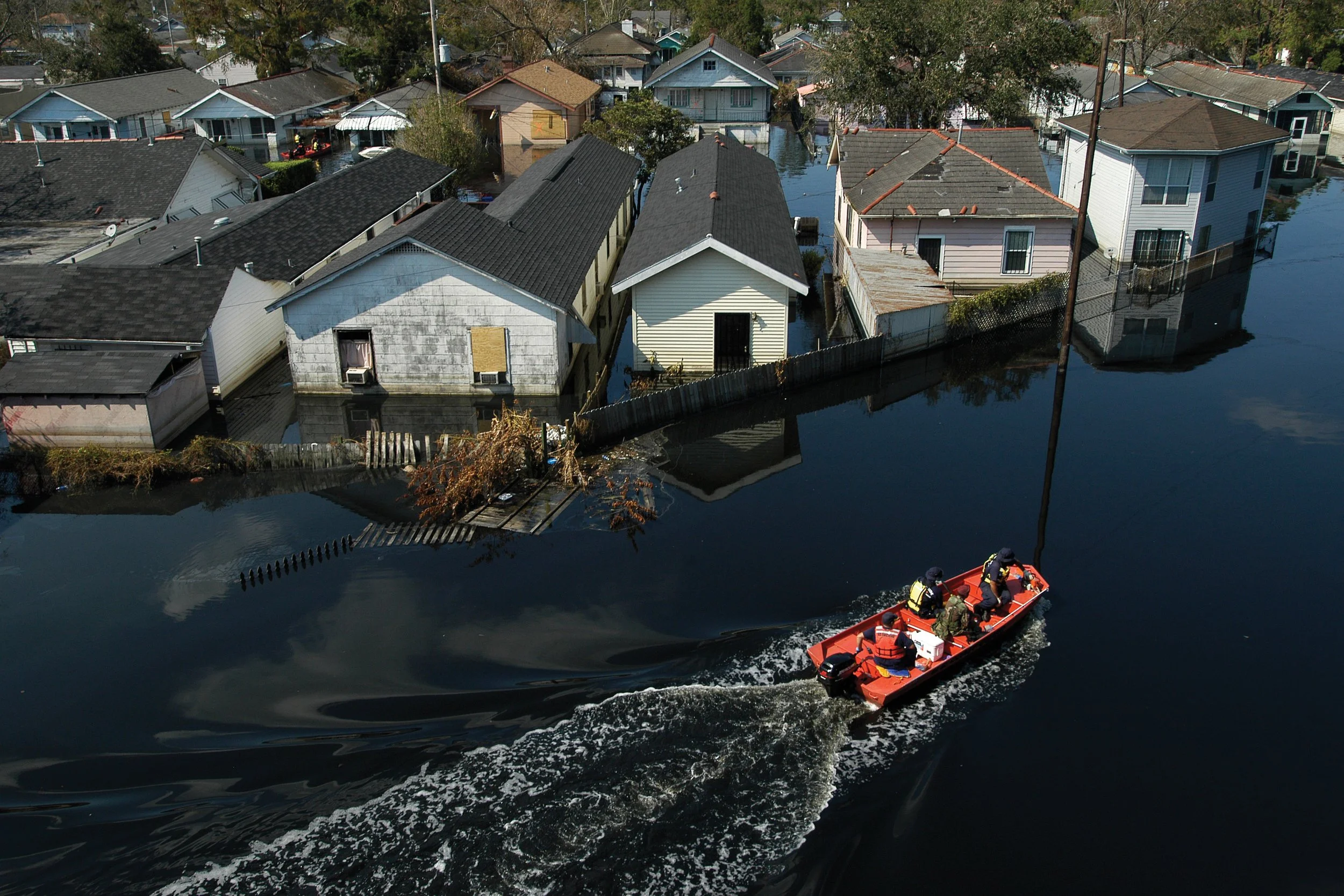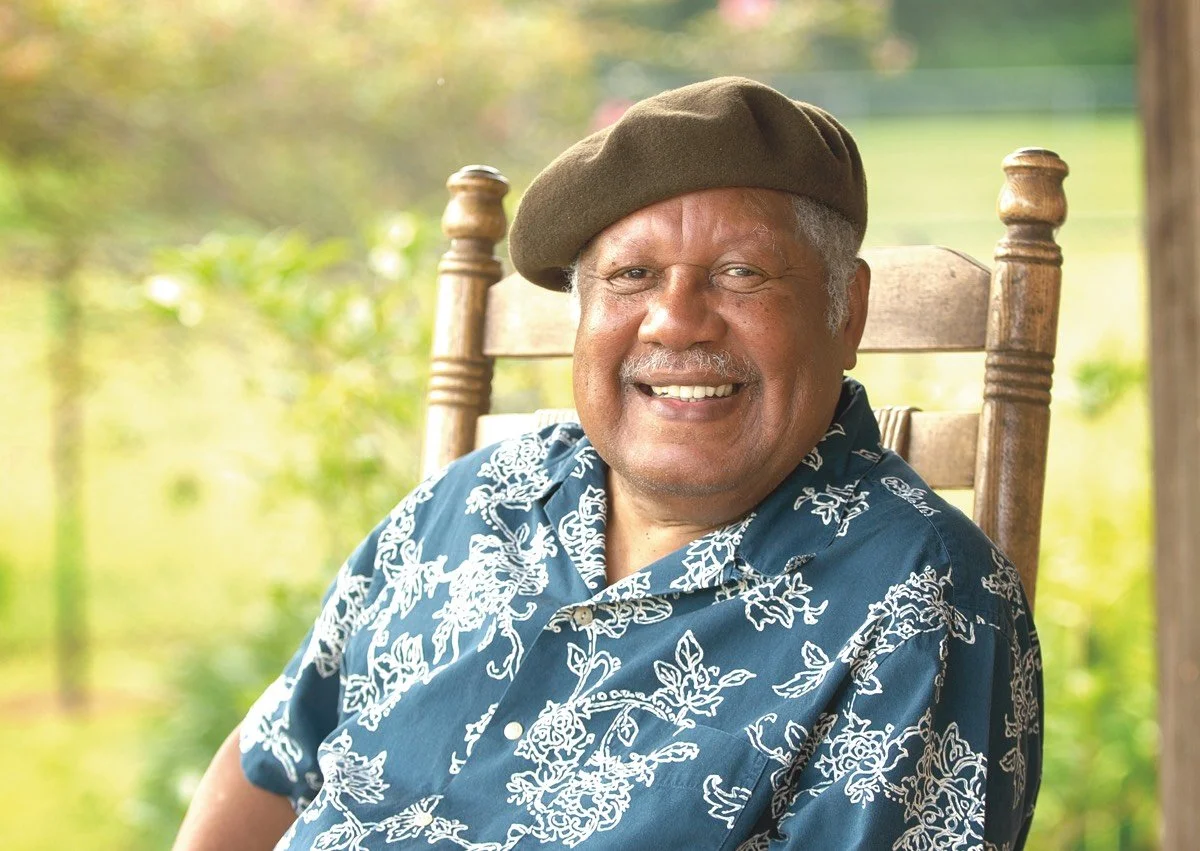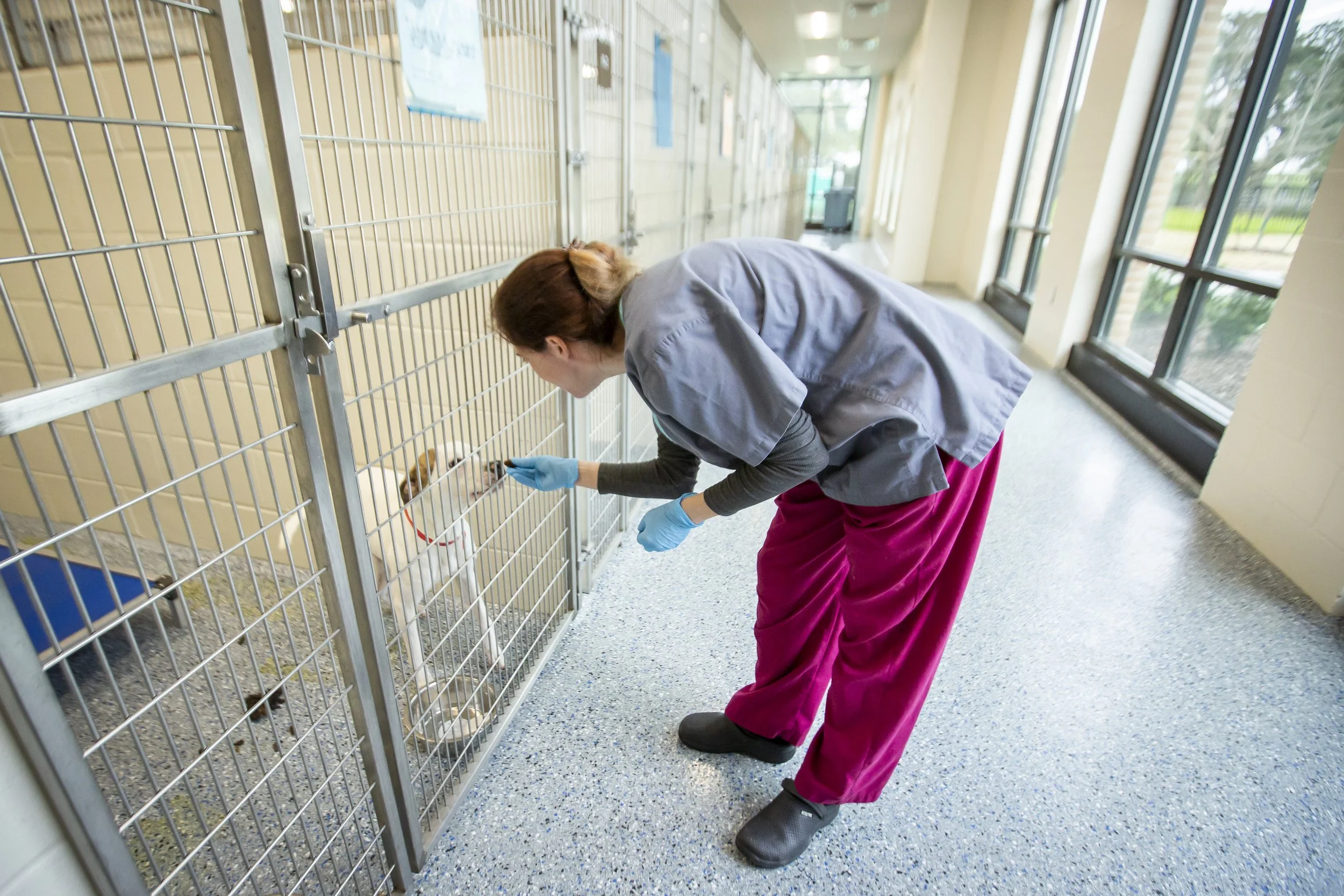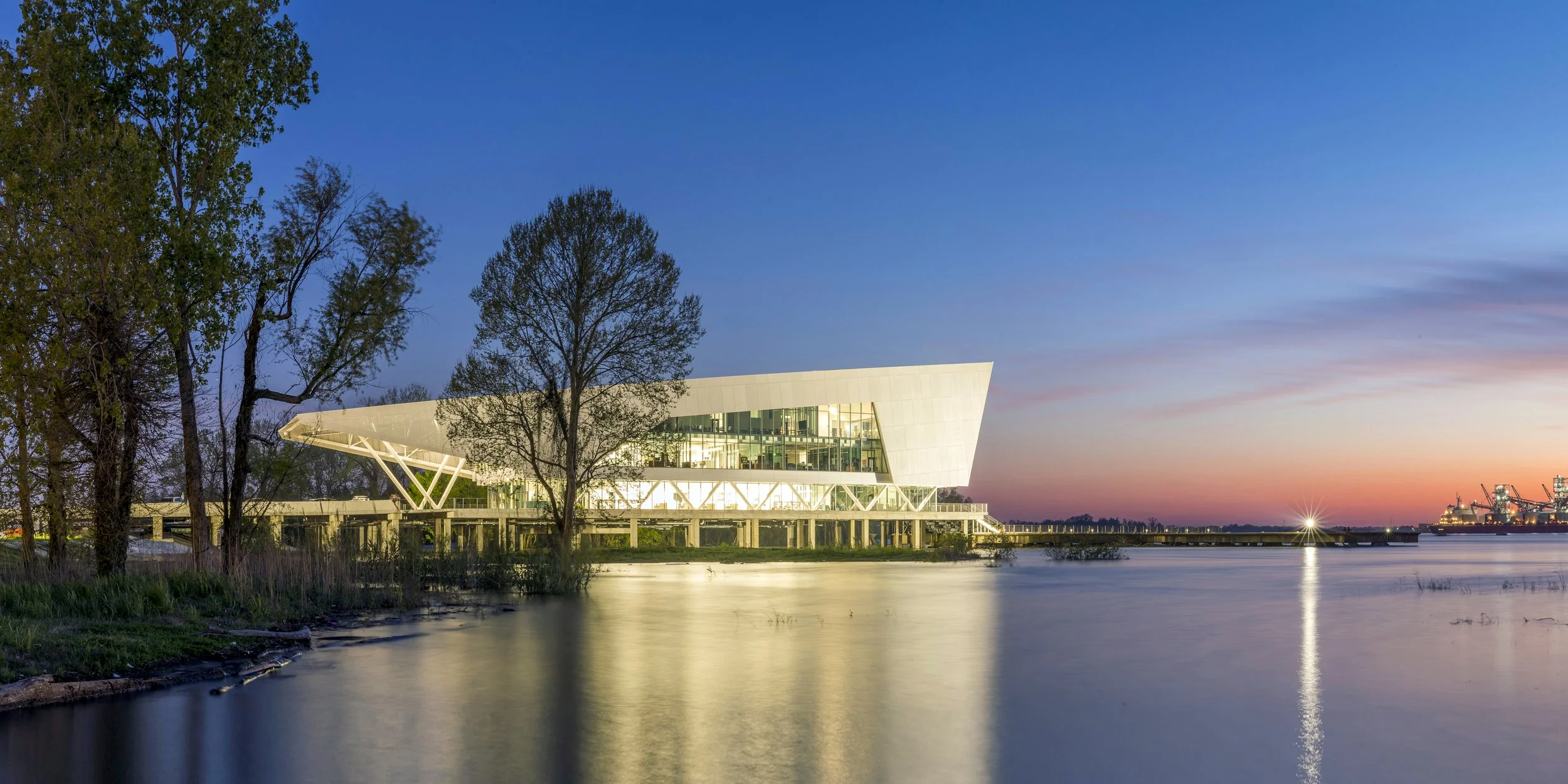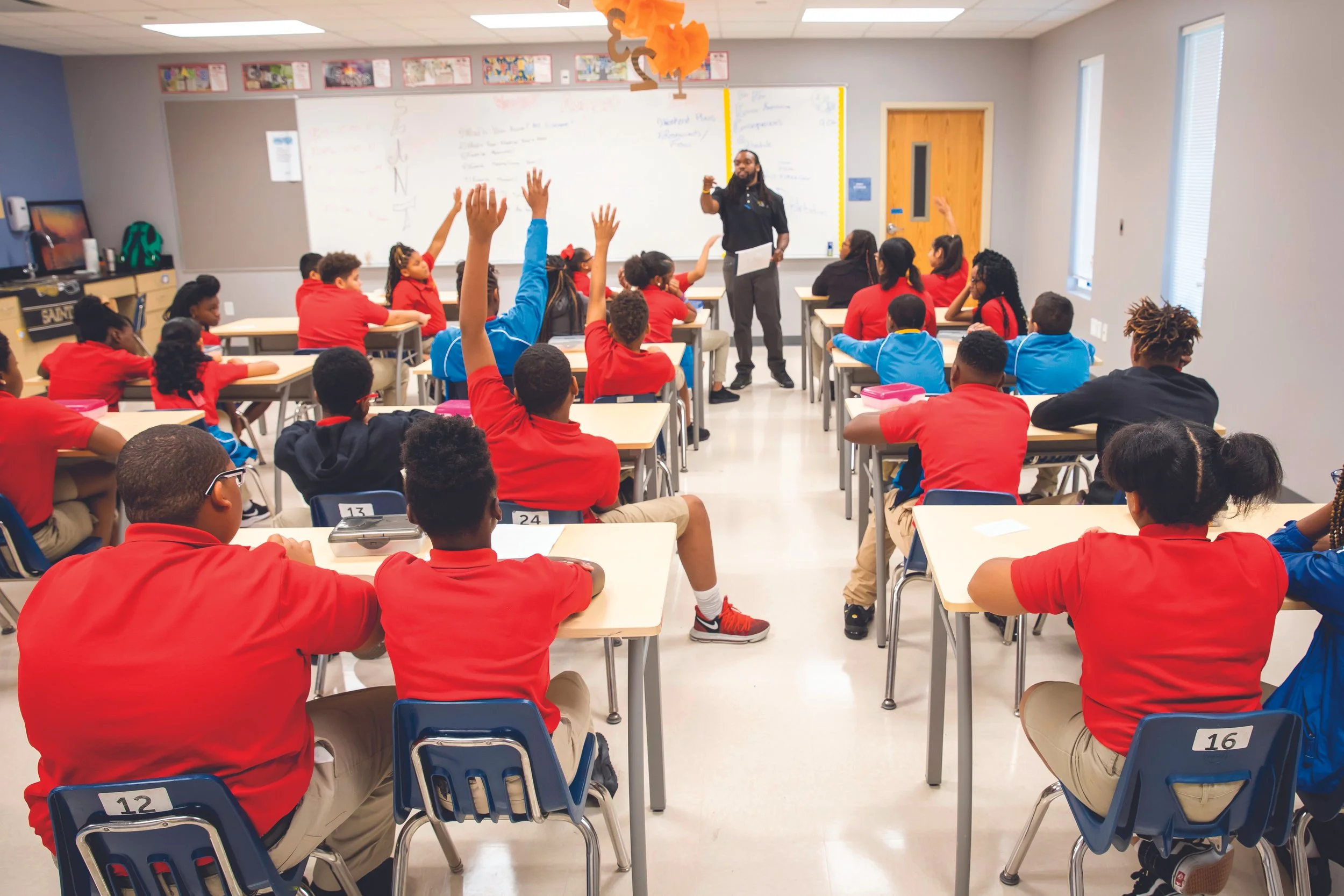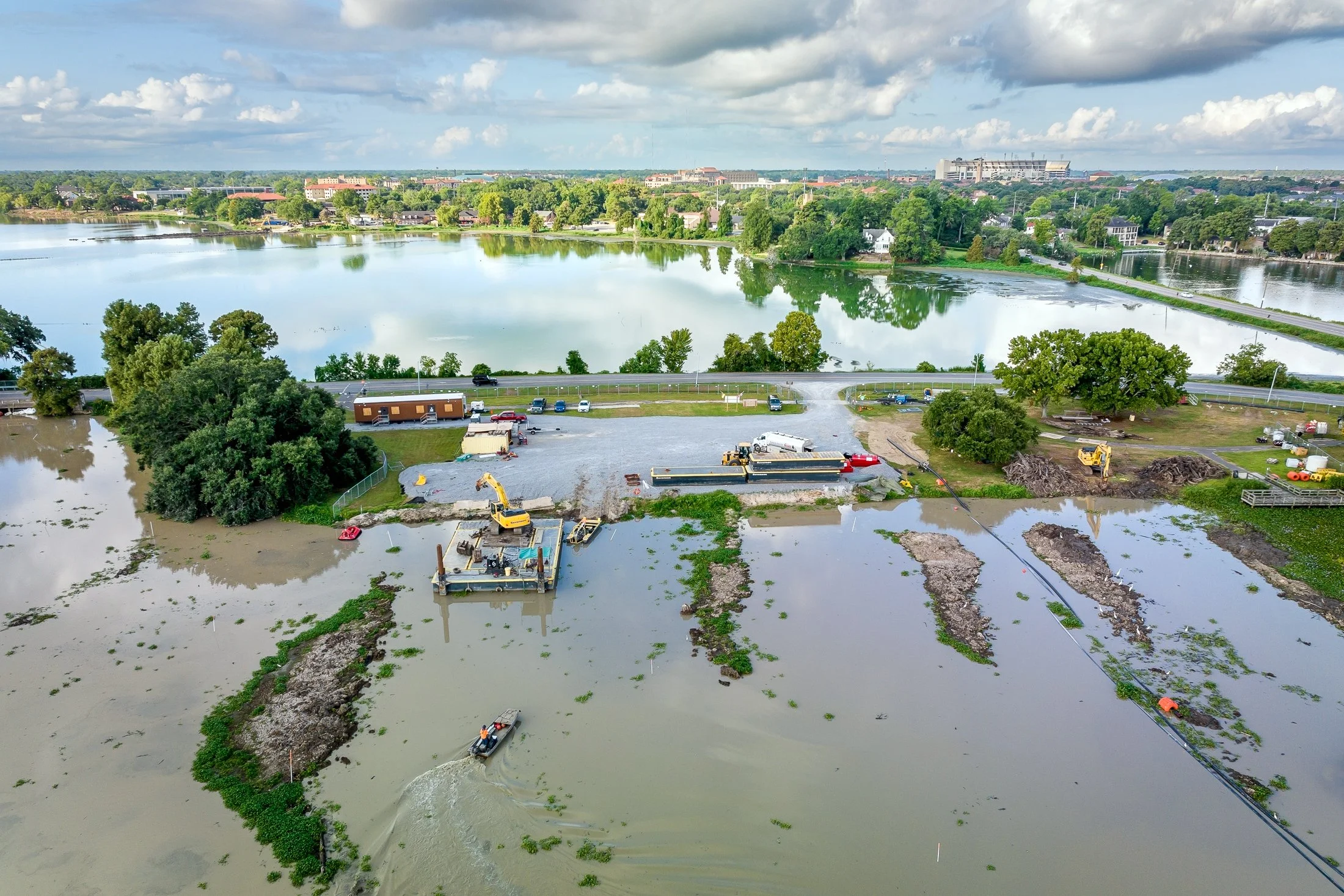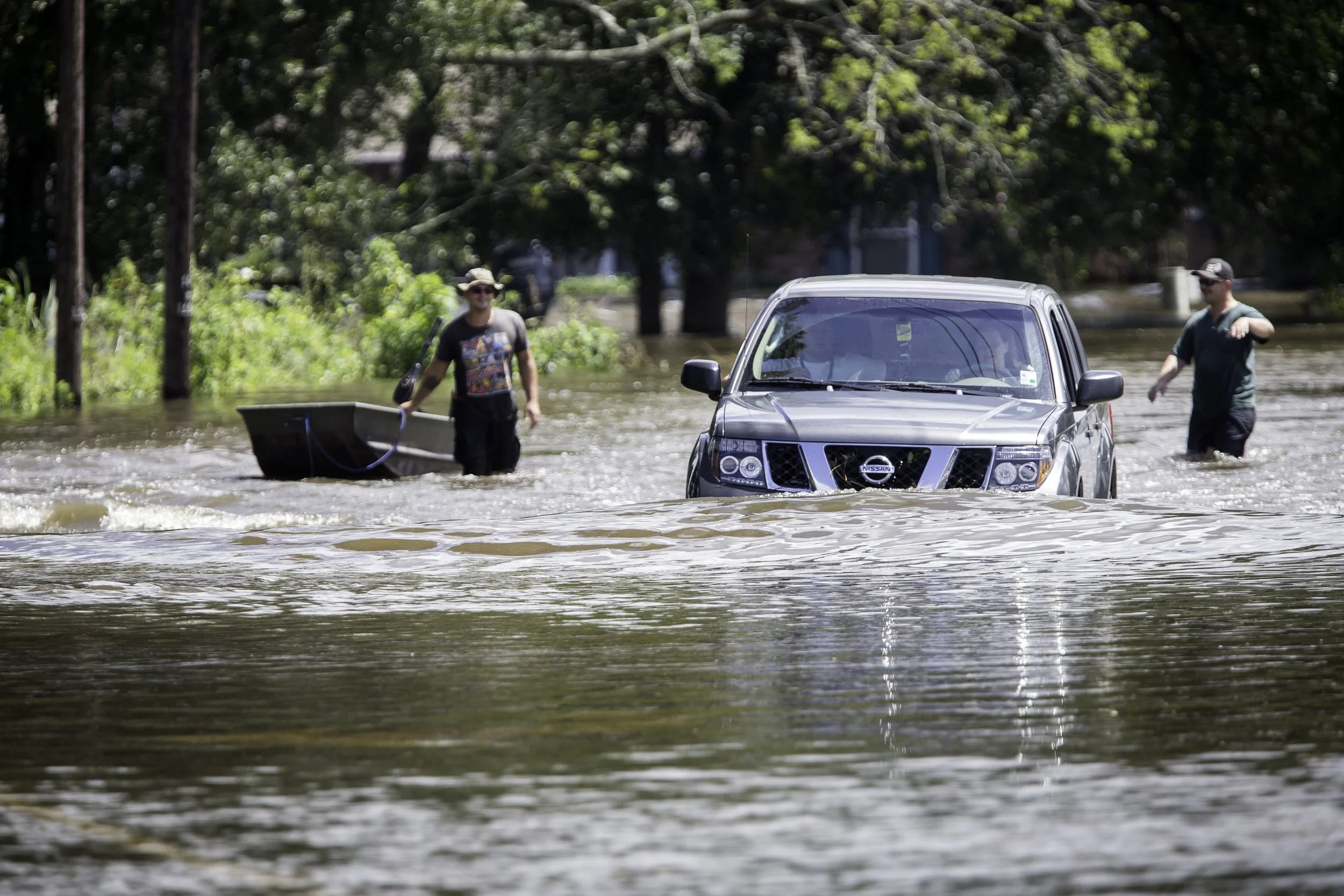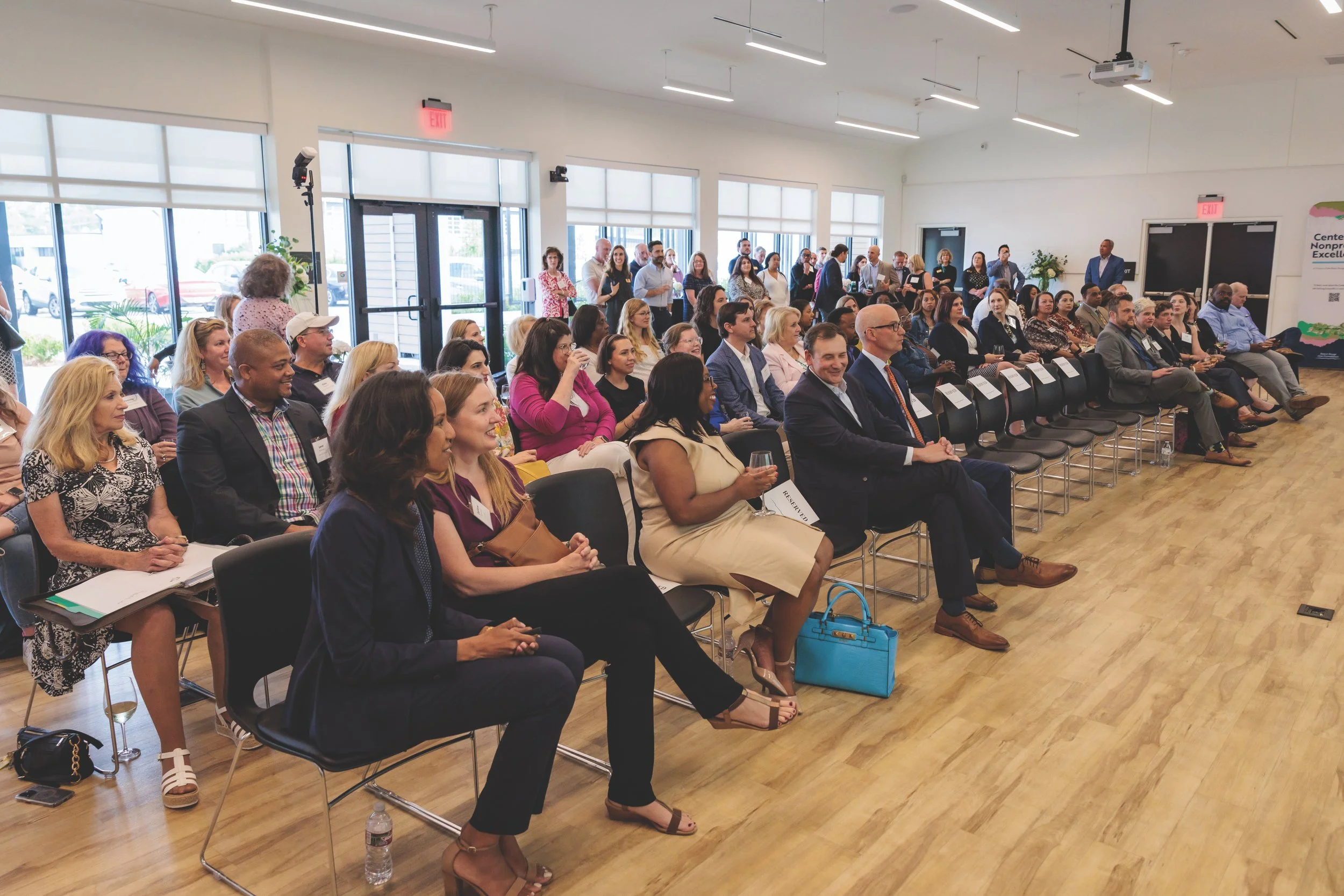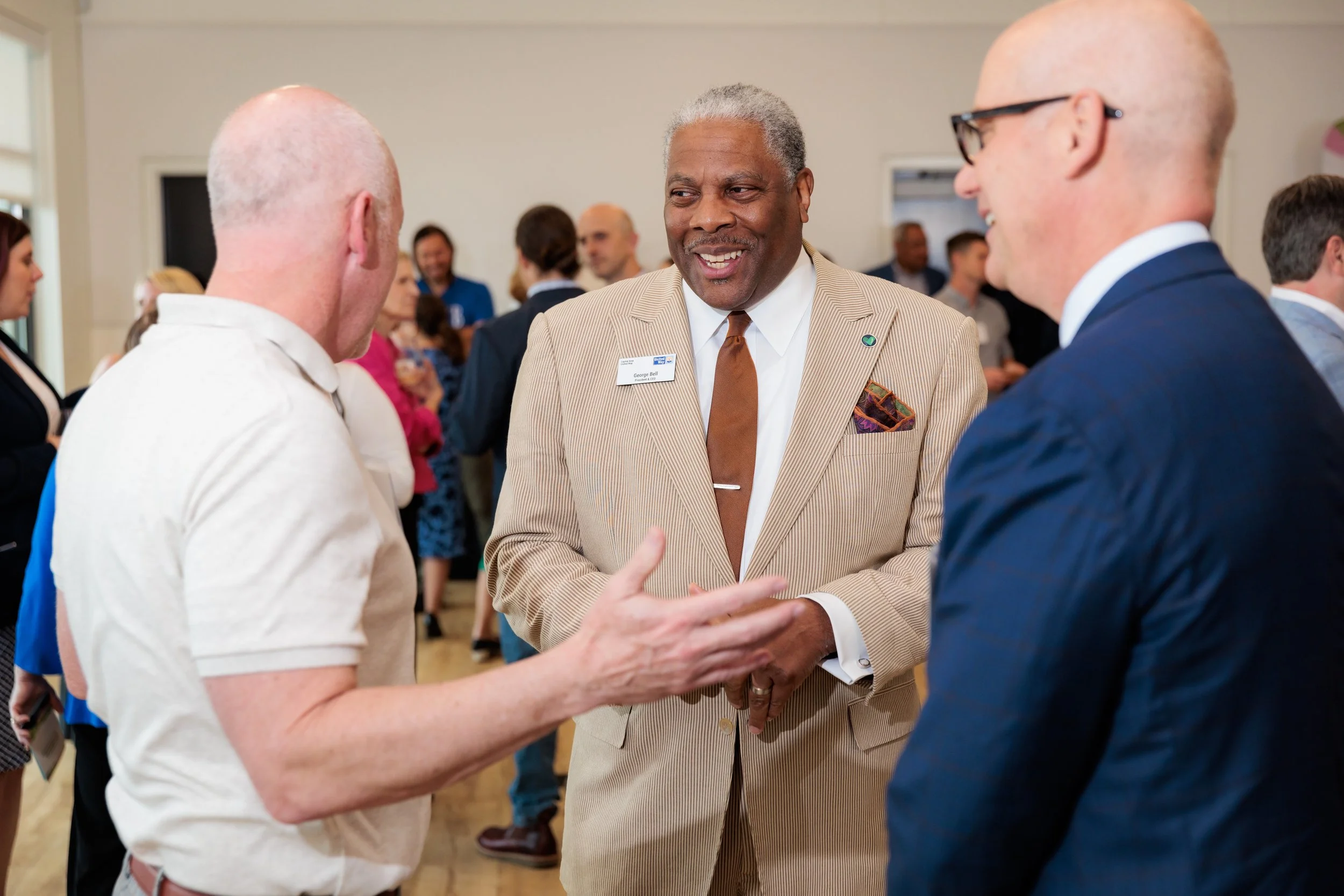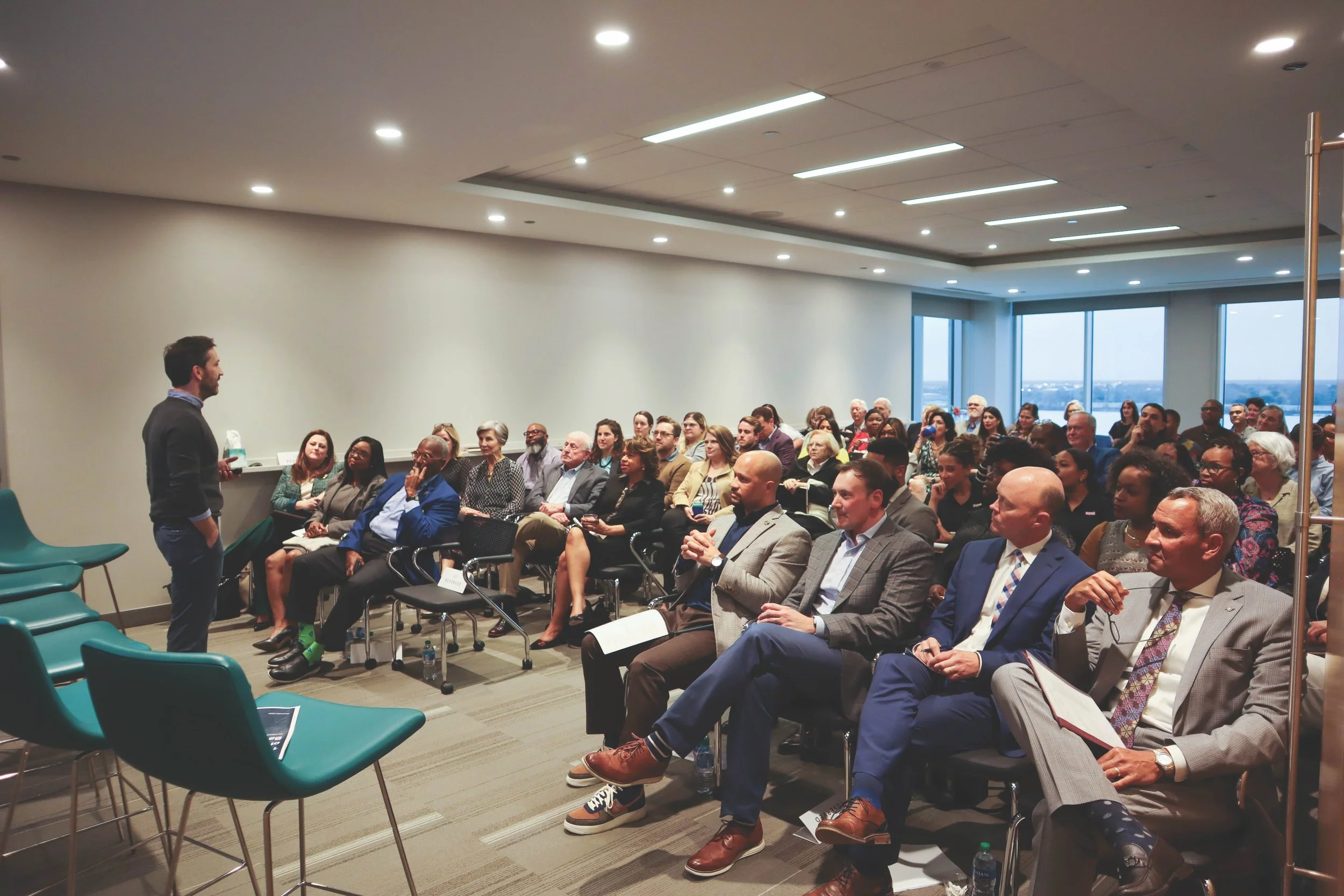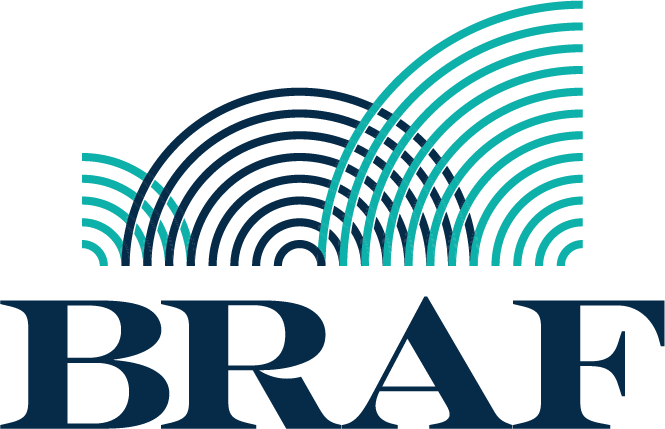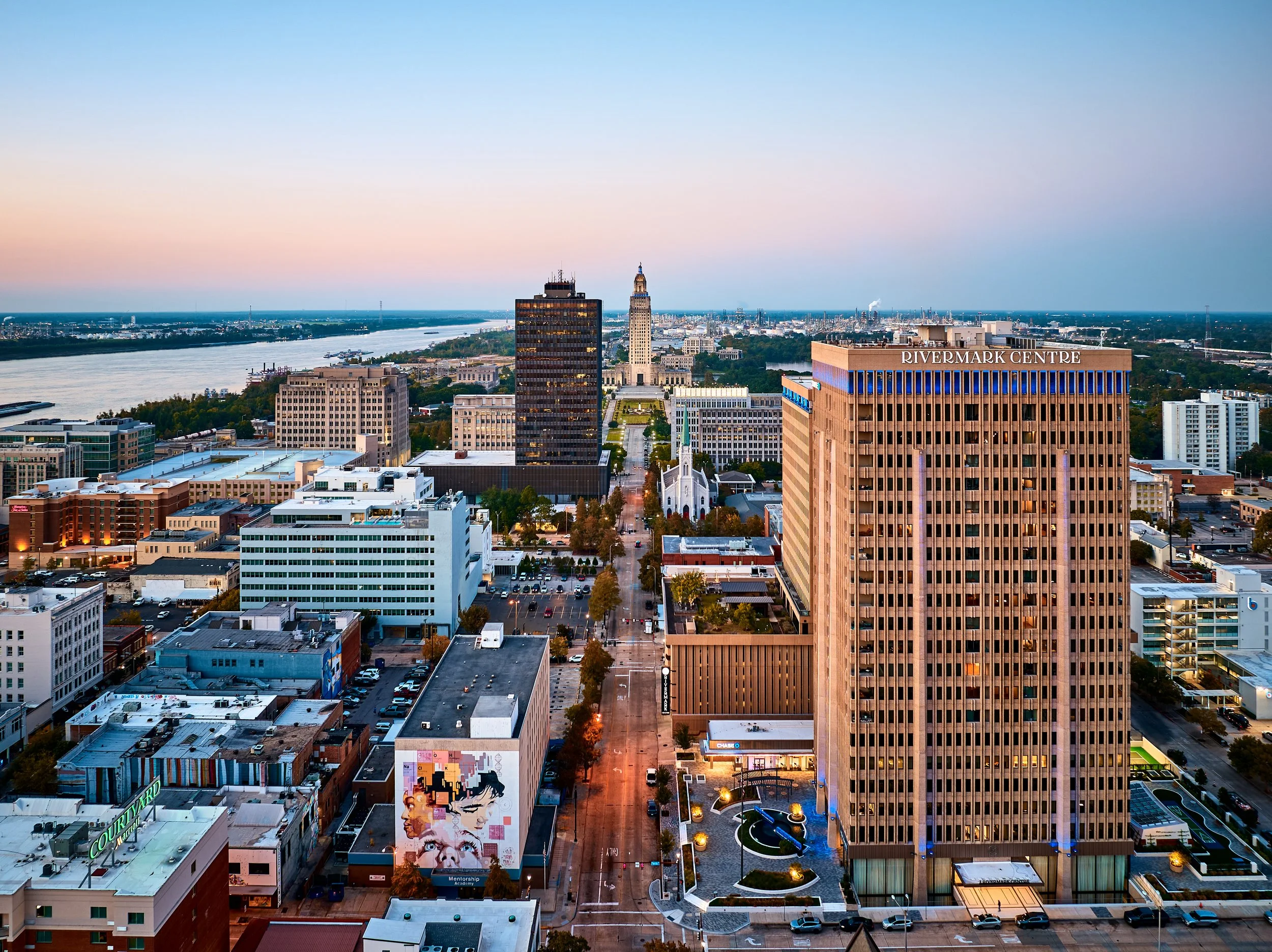JUNE 11, 1964
Establishment
John Barton and 11 other civic leaders determined to make life better in Baton Rouge gather with dreams and ambitions to launch the Foundation in a downtown office. Over six decades, the Foundation will make life better through initiatives and giving focused on the arts, schools, science, housing, health, and rebirth of the downtown cityscape. Its work will be of endless variety, from purchasing an EMS ambulance to restoring the city’s lakes to helping rebuild lives and communities after Hurricane Katrina.
(L-R) Charles F. Duchein, George Mathews, Sidney A. Champagne, Henry W. Jolly Jr. MD, John W. Barton Sr., Frank S. Craig Jr., Joseph H. Baynard, Harvey H. Posner, L. Heidel Brown. Not Pictured: Douglas L. Manship Sr., Benjamin B. Taylor Jr., Scott Duchein Barton
Downtown Baton Rouge, estimated 1966
Myron Falk
1970-1984
1978: First Director hired
Myron Falk was hired as the first part-time director. Falk and Chairperson Mary Frey Eaton created the Community Fund for the Arts in partnership with the Arts Council of Baton Rouge. The fund supports a thriving arts scene across the region, including Baton Rouge Symphony Orchestra and Of Moving Colors dance company.
1979: Barnes Trust Founded
The health care-focused Helen S. Barnes Trust enables Pennington Biomedical to hire its first full-time director with a six-year, $100,000-per-year grant. George Bray’s hiring provides huge momentum to grow Pennington into a research powerhouse of global renown. Barnes’ giving is a testament to a woman who lived modestly but dreamed big for her community.
Pennington Biomedical Research Center in Baton Rouge
George Bay
John Davies
1985-1994
MID TO late 1980s: Donor Advised FundS GROW in popularity
The first philanthropic tool of its kind in Louisiana, donor-advised funds permit individuals to support the organizations and projects they love close to home and around the world. A case in point about the flexibility of these charitable funds: One Foundation donor funded the construction of a volunteer-staffed medical clinic in the western African nation of Burkina Faso that provides care to this day.
1988: John Davies hired
The son of a diplomat who spent his formative years in Peru felt a natural connection to Baton Rouge, where he found a community eager to work to make life better for everyone.
From the start, Davies sought a higher profile for the Foundation—more members and more donations—out of conviction that it could do more. Over three-plus decades he would harness a willingness among disparate partners to come together on complex undertakings as different as restoration of University Lakes, criminal justice reform, and the development of Shaw Center for the Arts.
Shaw Center for the Arts
1993: Forum 225
Civic-minded young men and women came together to lead, serve, and celebrate Baton Rouge. Forum 35’s first large-scale project literally made the community brighter: Members raised $350,000 to light the Mississippi River bridge that is the gateway to Baton Rouge.
Now Forum 225, initiatives vary from community clean-ups to the We Are BR! civic pride campaign, observance of the 1953 Baton Rouge bus boycott and co-hosting the groundbreaking Plan Baton Rouge effort to revitalize the city through new urbanism.
1992: Wilbur Marvin Foundation Established
Wilbur Marvin loved building shopping centers in Puerto Rico and the Southern U.S. He also loved the cities where he did business, including Baton Rouge, where he created a legacy of community good when he left his assets to the Foundation through a new supporting organization, the Wilbur Marvin Foundation. Funds generated by those assets developed landmark projects of cultural and economic benefit like the $55 million IBM complex on the riverfront, the $70 million transformation of the Hilton Hotel and the Water Campus, which houses the world-renowned Water Institute.
Wilbur Marvin
Horace Wilkinson Bridge
John W. Barton
1995-2004
1997-98: Plan Baton Rouge I
A world-renowned urban planner, Andrés Duany, guided development of the first master plan for downtown and listened to what Baton Rouge said it wanted during a week-long public “charrette.” The focus of Plan Baton Rouge Phase I was strategic investments to drive revitalization. Downtown got it in spades: The state spent $500 million on an ambitious building program in the following years, an investment that prompted another $1.5 billion in private-sector spending.
2002
Inaugural Barton Awards The Barton Awards’ recognition of excellence and commitment in not-for-profit leadership and management celebrates winners for simply being the best in their field.
Named for Foundation founder John W. Barton, the Barton Awards include not just well-deserved accolades but also $10,000 cash for winners to spend as they see fit.
Construction cranes over Baton Rouge
2004: Civic Leadership Initiatives Department Founded
Developing long-term solutions to big issues like public education, health care reform, inner-city renewal and transportation was John Spain’s focus as head of the new civic leadership initiatives department. The work included creating master plans for restoration of University Lakes and the Baton Rouge Health District and pushing for passenger-rail service between Baton Rouge and New Orleans.
Mayor Kip Holden (Right)
2005-2009
2005: Hurricane Katrina
The hurricane that changed Louisiana forever changed the Foundation, too.
After decades working mostly behind the scenes, it played a high-profile role in emergency relief and rebuilding when the world reached out to help after the storm.
There is no overstating the scope of its Katrina response. It created funds for storm evacuees and the rebuilding of storm-impacted areas, distributed $45 million in aid, and coordinated offers of help from the use of private jets to the expert assistance of a French rescue team.
Rescue boat searches after Hurricane Katrina
2007: Gaines Award Launched
Louisiana’s towering storyteller lives on in this celebration of a rising generation of African American fiction writers. Past winners of the nationally recognized Ernest J. Gaines Award for Literary Excellence have landed on the New York Times bestseller list and Oprah Winfrey’s global book club.
2005: Employees 1st
A new program launches, enabling companies to support employees facing financial emergencies after a disaster or personal hardship. Employees 1st cash grants have covered the cost of breast-cancer surgery and other medical treatment, funerals and emergency housing after disasters like house fires.
Citizens promoting donations to local food banks.
Ernest J. Gaines
2008: Plan Baton Rouge II
Livability, entertainment, retail, and more downtown housing were among the focal points of Plan Baton Rouge Phase II, the 10-year update to the original master plan.
The plan’s second iteration envisioned Third Street as an entertainment corridor with restaurants and music. Strategic uses of the riverfront and greenways for walking and gathering were additional priorities to make downtown bustle.
Companion Animal Alliance
2010-2014
2010: Companion Animal Alliance
The Water Campus
Baton Rouge euthanized 80% of the dogs and cats in its shelter, most of them healthy animals, the year Companion Animal Alliance was founded by local animal-welfare advocates. Now it saves 81% of the animals it takes in. Initiatives to decrease the number of cats, dogs and other animals that enter the shelter include spay/neuter outreach and returning lost pets to own
2012: Water Campus
The 35-acre campus on the Mississippi River brings together world-class coastal scientists to tackle complex water-related challenges from South Louisiana to Vietnam.
Building sustainable communities as seas rise from climate change is a focus of the independent research institute. Its work ranges from modeling how sediment shifts in the waters surrounding Virginia’s Chincoteague Island to deploying Dutch water-flow models to save Port Fourchon.
Students in a classroom
2013: New Schools for Baton Rouge
New Schools for Baton Rouge brings nationally recognized charter-school operators to Baton Rouge to turn around failing public schools. Its goal is for no child in Baton Rouge to attend a D- or F-rated school by 2030.
The nonprofit has raised millions of dollars from national funders to recruit top charter networks to Baton Rouge, where it holds them accountable for measurable improvements in educational outcomes.
2014: Lakes Master Plan
The Foundation celebrated half a century of serving Baton Rouge and announced the $1 million master plan that laid out a vision of University Lakes as a beautiful and welcoming place where ecological restoration and expanded recreational opportunities go hand in hand.
Deepening the lakes by dredging them will improve water quality and prevent algae blooms. Dredged muck will be used for features like safer paths for walkers, runners and cyclists. A waterfront walkway will edge a new park at May Street and Dalrymple Drive, where shady spots will make this a place to linger and play.
Lakes project
Marcia Kaplan Kantrow
2015-2019
2016: Inaugural Kantrow Award
Marcia Kaplan Kantrow worked alongside John G. Davies as the Foundation’s first program director on initiatives to make life better in the community she loved.
The annual award honors the legacy of the Alexandria native who worked with quiet determination to make Baton Rouge better until her death at 53.
The award includes a $5,000 grant to the recipient’s not-for-profit of choice.
2016: Baton Rouge’s Great Flood
More than 140,000 homes were flooded by the cyclonic storm that dropped as much as 30 inches of rain in two days over some parts of South Louisiana.Some 16,000 donations from around the world helped raise more than
$5 million for the Foundation’s Flood Relief Fund.
The Flood Proof Title Reclamation Project provided free legal help to flood victims whose homes were damaged by the storm but who lacked clear title or other key documents.
2016: Criminal Justice Coordinating Council
A Criminal Justice Coordinating Council initiative to streamline case processing safely reduced the parish incarceration rate by 47 percent over two years.
Developed by criminal justice experts and advocates, CJCC’s pre-trial diversion program directed nonviolent detainees into mental health care and substance-abuse treatment instead of jail. Its work has moved East Baton Rouge closer to CJCC’s goal: A justice system that is fairer and more equitable for all residents.
2016: Employee’s 1st Grows
Employees 1st expanded sharply after the Great Flood of 2016, a 1,000-year storm that destroyed homes across South Louisiana when rain fell for days.
Nearly 80 companies and government agencies opened new employee-relief funds with Employees 1st to help scattered workers with emergency and longer-term needs. The funds received a combined $6 million in contributions in the days and weeks after the storm.
Meals are delivered to healthcare workers during Covid.
The Baton Rouge Health District collected PPE during Covid.
2020-2022
2020: COVID-19
The Fueling the Fight Fund collected more than $300,000 to cook and deliver meals to area health care workers during the pandemic. The Three O’Clock project served 50,000-plus meals a day to hungry South Louisiana children, including in Baton Rouge in partnership with BREC. The Baton Rouge Health District collected personal protective equipment at an unused airport hangar, then distributed it to health care providers across the region.
John Davies and Jennifer Eplett Reilly
2022: The End of an Era
John G. Davies changed Baton Rouge. Davies grew the Foundation’s assets from $5 million to $722 million over 33 years, when it made $550 million in grants to not-for-profits and for civic improvement. Davies was adept at deal-making and projects under his leadership included The Water Institute, Shaw Center for the Arts, IBM complex and Bridge Center for Hope. Davies also changed Saturday—and later other—mornings by way of BREADA Farmers’ Market, a beloved local tradition for many in food-loving Baton Rouge.
2022-2023
2022: Chris Meyer
Chris Meyer understands the power of education. The first member of his family to attend college, he graduated from Tulane and Harvard Kennedy School before traveling the globe with Defense Secretary Robert Gates as a White House Fellow.
He went on to found New Schools for Baton Rouge. Improving lives by creating opportunities for everyone has long shaped Meyer’s work—a guiding principle well suited to his job as Foundation president and CEO.
Chris Meyer
2023: Center for Nonprofit Excellence
Making not-for-profits stronger, more strategic and better equipped to serve their communities is the focus of the Foundation’s new division.
The Center for Nonprofit Excellence offers continuing education and other support to bolster technical skills and expand capacity while providing a dedicated entry point for not-for-profits to connect with Foundation staff. Effective engagement with the broader community is another key function.
2022: Strategic Planning
The strategic framework is a new “North Star” guiding the continuing work of building a thriving Baton Rouge for all.
Input from more than 300 community members shaped its priorities, which include catalyzing change, fostering a strong philanthropic community, and empowering changemakers.
Opportunity Data Project presentation
2023: Opportunity Data Project
Data can tell us plenty, including where to invest for the best return.
The data-driven Opportunity Data Project aims to improve the quality of life in Baton Rouge by identifying specific areas most in need of philanthropic support and other resources.
The partnership with Common Good Labs will take into account educational attainment, income levels, health care access, and other factors to determine where targeted investments can do the most good.
BRAF’s new logo mark
2024: 60 YEARS
OF IMPACT
At the 2024 Annual Meeting, the Foundation celebrated 60 years of impactful work and reflected on the remarkable accomplishments that have shaped the region over the past six decades.
The evening was a pivotal moment as a refreshed brand identity was unveiled that highlights the ripple effect of partnering with BRAF. This new direction emphasizes the power of collaboration and the importance of working together to build a stronger Baton Rouge.
Throughout the year, BRAF focused on honoring its legacy while setting the stage for the future by amplifying stories of progress, investing in new ideas, and uniting community members around a shared vision for tomorrow.
Baton Rouge skyline with the Rivermark Centre
2025: LOOKING AHEAD
The Foundation continues to grow in scale, scope, and impact by expanding initiatives, deepening community partnerships, and investing in long-term solutions to the region’s most pressing challenges.
The move to the Rivermark Centre in Downtown Baton Rouge is designed to encourage collaboration, spark innovation, and foster stronger connections among nonprofit leaders, civic partners, and donors.
Rivermark will not only house the rapidly growing team but will also serve as a hub for progress reflecting BRAF’s commitment to cultivating a more connected and resilient community.
This is a bold new chapter. With continued growth, innovation, and meaningful partnerships, the Foundation is well-positioned to deepen its impact for years to come.

